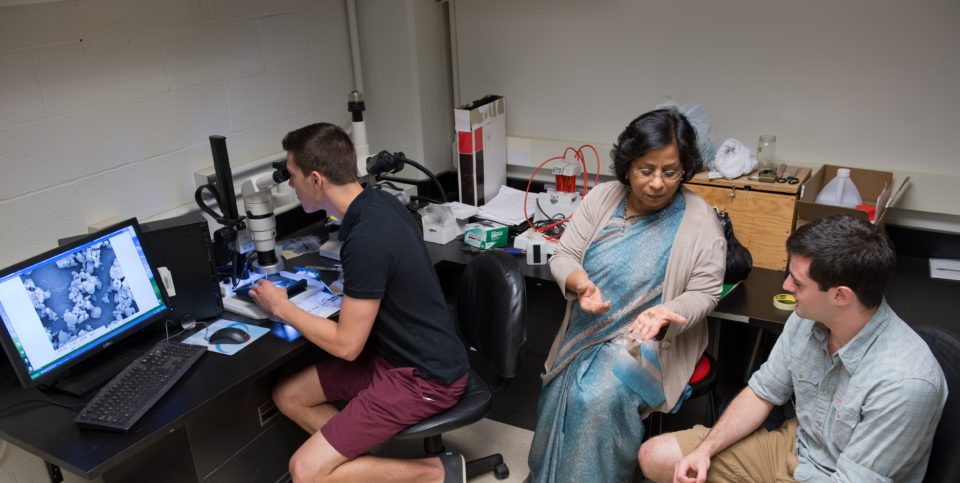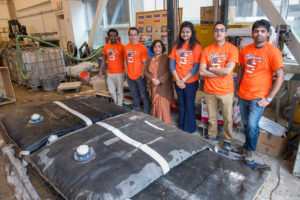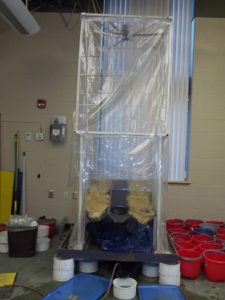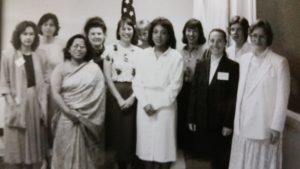Geotextile Tubes for Sustainable Dewatering and Infrastructure | Natural Fibers | Filtration Properties of Geotextiles | Women and Geotechnical Faculty
Geotextile Tubes for Sustainable Dewatering and Infrastructure
The need to dewater dredged sediments is a pressing issue in the United States and around the globe. Geotextile tubes are dewatering devices for sedimentation control. These tubes are pumped with sediment-laden water, water is allowed to pass through the membrane while the sediment stays retained inside the device.They are cost effective and simple to transport and use; making them a competitive option to confined disposal facilities and mechanical systems.
Despite they’re growing use, there are several aspects of geotextile tubes that have halted they’re widespread utilization. The first is the adoption of many different performance indices, test methods, and environmental agents. The second is focusing almost exclusively on high-tenacity polypropylene woven geotextiles and non-biodegradable polymers for flocculation.
Dr. Bhatia has collaborated with industry and within academia to explore many areas of this technology in her research. Some of these topics include: implementing starch-based polymers to increase flocculation of sediments, standard testing of polymers in filtrate, strengthening geotextiles via fiber addition, heavy metal adsorption, and finally large scale testing and modeling of geotextile tubes. Links to some of her publications in this area are provided below.”
Relevant Publications include:
Natural Fibers
Dr. Bhatia has done significant work for the last 15 years researching natural fiber applications and social impacts. Her research can be categorized in the following ways:
Natural Geotextiles – One application of natural fibers that Dr. Bhatia has explored significantly is woven and nonwoven geotextiles for erosion and sedimentation control, one application she has focused on are Rolled Erosion Control Products (RECP’s). RECPs are blankets of prefabricated netting created from both natural and synthetic fibers made to assist in erosion control on areas of exposed soil, particularly on steep slopes. Dr. Bhatia has explored coatings to apply on RECPS to improve performance, comparisons of lab testing methods and performance of various types of RECP’s. Shown on the left is a Rainsplash Simulator, a lab tool constructed to test RECP effects on rainsplash erosion.
Adobe Homes – Another application of natural fibers she has explored is implementing them into Adobe homes to modify their performance. Adobe as a construction material is still utilized extensively in developing countries due to their simplicity. Structurally, these homes are often only designed for gravity holds and w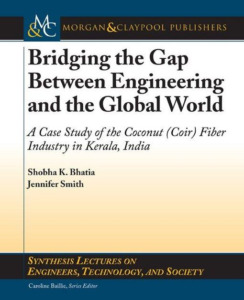 hen exposure to excessive shear force, like that of an earthquake, they are prone to crack and compromise structural integrity. Various strengthening schemes have shown to improve the energy absorbing capacity.
hen exposure to excessive shear force, like that of an earthquake, they are prone to crack and compromise structural integrity. Various strengthening schemes have shown to improve the energy absorbing capacity.
Heavy Metals – The heavy metal absorbance capability of natural fibers has been a critical aspect of Dr. Bhatia’s research.
Social Impacts – “Bridging the Gap between Engineering and the Global World: A Case Study of the Coconut Coir Fiber Industry in Kerala India” is a book written by Dr. Bhatia and Dr. Jennifer Smith. This book discusses the critical role engineers play in sustainability. Indicating that typically these professionals focus solely on the technocentric and ecocentric dimensions while leaving the sociocentric dimension with little thought. The intention of this book is to provide a case study that educators can utilize and incorporate into coursework which helps to bridge the gap between the engineering profession and the global world. This particular case study details the journey from incorporating natural fibers into erosion control methods to discovering the origins of those fibers in Kerala, India and seeing the profound impacts the industry has on its workers
Filtration Properties of Geotextiles
Dr. Bhatia and her students have characterized the pore-size structure of various geotextiles, explored the method effectiveness of measuring pore size, studied the impact of pore size on the clogging behavior, and much more. Links are provided below to relevant publications. Her research can be categorized in the following ways:
- Characterization of Geotextiles for Filtration
- For the last 15 years Dr. Bhatia has worked with both industry and academia to understand the dynamic between the pore structure of geotextiles and their performance. She has utilized six different techniques and characterized between 60 and 70 different geotextiles to further understand the relationship of performance and pore structure.
- Developing Testing Standards
- Dr. Bhatia is working toward making a new testing method, ASTM D 6767: Capillary Flow Method, standard and measuring it against current standards across the globe to characterize geotextiles. The current standard in the United States is ASTM D 4751: Standard Test Method for Determning Apparent Opeining Size of Geotextiles, which has many imitations such as electrostatic effects and trapping of glass beads within the geotextile. The new Capillary Flow Method can measure properties like pore size accurately and quickly. May 4th 2015, a meeting was held at Syracuse University with members from academia and industry to discuss the test results of ASTM 6767.
Relevant publications:
Women and Geotechnical Faculty
Dr. Bhatia has made many strides toward equality in engineering. There is a significant and persistent under-representation of women in positions within the geotechnical engineering field. Bhatia was the first person to organize the first conference 20 years ago at the Nati
onal Science Foundation to promote and connect Women in Geotechnical Engineering. She has worked to develop the “Collaborative Conference: Connecting Women Faculty in Geotechnical Engineering – Thriving in a Networked World” which intends to combat the isolation of female faculty in geotechnical engineering by creating a network of engineers to provide resources, social support, and inspire collaboration.
Currently, the National Science Foundation is sponsoring a project for which Dr. Bhatia is Co-Pi targeted at Women in industry and as faculty in academia to build upon past efforts and create a network of Geotechnical Women Faculty. Part of this project will be to enhance the current understanding of social networks and how they impact careers, to build networking capacity by increasing the number of ties and connectivity between colleagues, and to develop and utilize long-distance strategies for maintaining a network.
Relevant Publications:
